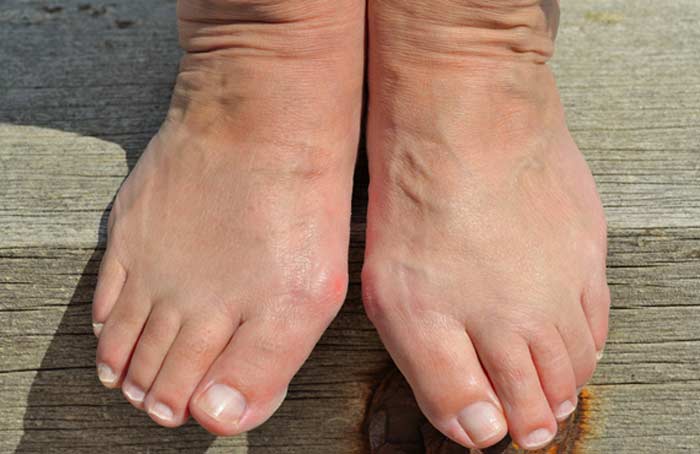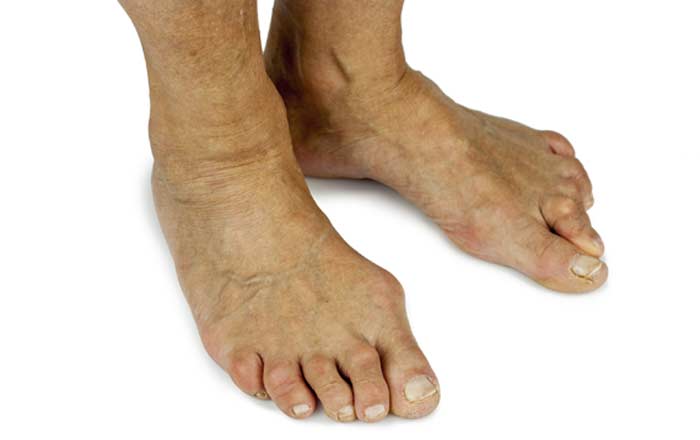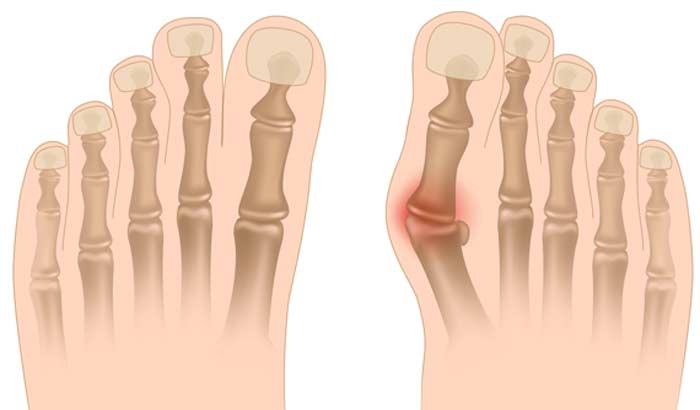
On the surface, a bunion appears as a hard lump on the side of the big toe.
Bunions are actually formed by the joint located at the base of the toe. They result from the big toe being improperly positioned in such a way that it leans in, toward the other toes. Over time, this positioning causes the joint at the base of the toe to stick out under the skin.
This protrusion of the joint may cause unpleasant symptoms, and may make it difficult for the patient to feel comfortable in their shoes.
Symptoms of Bunions
The most obvious symptom of a bunion is a visible lump or bulge at the base of the big toe. The area of the lump may become red or swollen. It may also be painful, especially when pressure is applied by shoes or different body positions. The big toe tends to lean over the toe beside it. In this region where the big toe overlaps the adjacent toe, calluses may form. These are areas of firm, thickened skin that develop when skin is exposed to frequent contact or friction.


Treatment for Bunions
Treatment for bunions varies depending on the severity of the condition and age of the patient. Typically, a doctor will recommend non-surgical remedies and behavioral adjustments to those experiencing only mild discomfort. Such options may include a change to more appropriate and comfortable footwear, application of ice packs to manage pain and swelling, using special padding to cushion the bunion and taking over the counter pain medications. A doctor may prescribe stronger pain medications when over the counter medications fail to sufficiently manage pain.
For more severe cases of bunions that do not respond to pain management and behavioral changes, surgery may be recommended. There are several options for surgical treatment of bunions. Surgery may involve realignment of the toe, removal of inflamed tissue from around the area of the bunion, or replacement of the toe joint with metal components. There are numerous surgical options available, and a doctor will help decide which surgery is best for any specific case.
Surgery is not usually recommended for adolescent patients. Their bodies and bone structures are still developing, and bunions are likely to return in younger patients. In addition, younger bunion patients often retain greater mobility in their big toes, reducing the need for surgical intervention.
